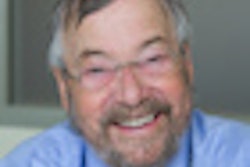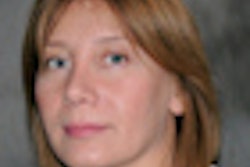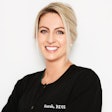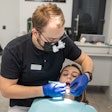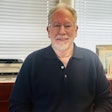
A media campaign in Detroit that utilized print, radio, billboards, and mailed surveys was effective in raising public awareness of oral cancer and influencing healthcare providers to screen for the disease, according to a new study (Journal of the American Dental Association, September 2012, Vol. 143:9, pp. e57-366).
The Detroit Oral Cancer Prevention Project (DOCPP) was designed in part to pull a high-risk population into requesting oral cancer screening and to push physicians and dentists to perform oral cancer screenings. It specifically targeted the city's predominantly (82%) African-American population because "many African Americans have limited knowledge about the importance of early detection and about the risk factors and signs of oral cancer, and they are less likely than people of other races to have been screened for oral cancer," the study authors wrote.
The campaign, whose aim was to reach out to and connect with black men, ran in cycles of several weeks' duration during 2006 and 2007. It featured billboards, prime-time radio ads, newspaper ads, and a toll-free hotline. In addition, a customized DVD about oral cancer and how to screen for it was mailed to all dentists and physicians in the targeted area, and a related online continuing education (CE) course was created.
Focus groups were used to help develop "culturally relevant" messages for the targeted audience, the study authors noted. In addition, they hired dental and medical consultants to read and comment on the text of the DVD and the online CE course, and the actors in the course were all black dentists from Detroit.
More than 1,300 radio ads
The billboards were placed in "highly visible locations" in and around Detroit, with three variations: photographs of a pastor and his wife kissing, a truck driver eating, and a dentist pretending to sing. The radio ads, which were 60-seconds long and emphasized "painless and free" screening, were aired on stations that were popular with the targeted audience in metro Detroit and Wayne, Macomb, and Oakland counties. The newspaper ads, which appeared in local papers, focused on the toll-free hotline for free cancer screenings.
During the campaign, 1,327 radio spots aired in prime time for 12 weeks per year, 42 billboards were displayed for nines weeks' duration three times per year in Detroit and on some major roads in the metro area, and two newspaper ads were printed. In addition, 242 education sessions were conducted by health educators with various community groups, including churches and homeless shelters; in one instance, nearly 2,000 people attended one of these sessions.
In addition, before the campaign started and during each year of the campaign, the study authors mailed surveys to random samples of physicians and dentists practicing in targeted and nontargeted areas. The surveys were designed to assess several factors, including the provider's current screening practices for oral cancer and their knowledge of oral cancer risk factors. The surveys also included four questions specific to the mass media campaign and their awareness of the campaign, as well as their patients' awareness of it.
Cost-benefit analysis
The total cost of the campaign was $795,898. Funding was provided by two grants from the National Institute of Dental and Craniofacial Research and through a grant from the Delta Dental Fund, an affiliate of Delta Dental of Michigan.
The billboards and radio advertisements were the most effective methods of outreach, according to lead author Amid Ismail, BDS, MPH, MBA, DrPH, the dean of the Kornberg School of Dentistry (at the time of the oral cancer project, Dr. Ismail was a professor of health services research and cariology at the University of Michigan School of Dentistry and a professor of epidemiology in the School of Public Health). The toll-free hotline received 1,783 calls, and the majority of callers (57%) said they were prompted to call by one of the radio ads, he and his colleagues noted.
"The most surprising finding was the response we got from the billboards and radio ads," Dr. Ismail told DrBicuspid.com. "The radio ads were very effective in getting people to call. The other surprising thing is that people were very concerned about physical and emotional functioning -- 'I cannot eat' and 'I cannot think.' Every population has a trigger, and for this population the trigger was concern that they could not function [if they got oral cancer]."
In all, the clinic screened 1,020 adults and referred 78 for further examination. Three cancers, two precancers, and 12 benign tumors were detected.
"A multifaceted social marketing campaign including radio ads, billboards, and education sessions can effectively target a high-risk population," Dr. Ismail reported in an earlier analysis of the data (Community Dentistry and Oral Epidemiology, August 2010, Vol. 38:4, pp. 371-382). Given an outlet, this type of campaign could result in a significant number of people getting screened at a relatively low cost, he and his co-author, Jenefer Jedele, added.
Follow-up, follow-through critical
Dr. Ismail and his colleagues also analyzed the impact of the campaign on healthcare providers and their oral cancer screening habits, and found that more dentists than physicians reported screening patients routinely. In addition, more dentists reported that they referred more patients for biopsy or further evaluation compared with physicians, and more dentists in the targeted area than the nontargeted area reported an increase in patients' questions and requests for screening, the researchers found.
The survey findings show that the media campaign was effective in influencing providers' screening for signs and symptoms of oral cancer, they concluded.
"We can talk with providers and small groups from now to forever, but we're not going to reach this target population except through media," Dr. Ismail said.
Even so, he acknowledged that without proper follow-up by healthcare providers and follow-through by the patients themselves, the effectiveness of even a successful campaign such as this is limited.
"Even when you provide free care, it doesn't mean that people will use it," he said. "The majority of people (who called the toll-free hotline) came for the free screening, and of those we referred for further follow-up, 40% did not follow up. Either they didn't come back for another evaluation with the screening clinic or they didn't follow up with the surgeon. And we tried to call them."
Part of the problem lies with a cultural sense of fatalism, Dr. Ismail explained.
"The majority of people will say, 'I don't want to know I have a bad thing," he said. "And that is a function of background, socioeconomic status, finance, quality of care -- a lot of issues. There are people who want to know their outcome and people who don't."
But the U.S. healthcare system also is to blame, he added.
"Cost is an issue," Dr. Ismail said. What happens after you screen? Do you have follow-up care, because someone has to pay for that, he noted. "And that is part of the problem with our healthcare system. If we tell them [patients] they have a suspicious lesion, it puts them in jeopardy because they may not have any follow-up care. So if we screen them, we have to ensure that there is some way to provide that care."





